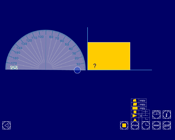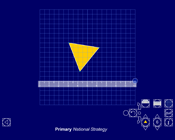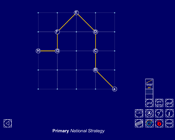Teaching guidance
This teaching guidance document suggests some of the key vocabulary, models, images and practical equipment that children should experience and be able to use. It also includes some teaching tips to provide a few starting points for ways of supporting children with this area of mathematics.
 Can I use a written method to subtract? - teaching guidance | 25KB
Can I use a written method to subtract? - teaching guidance | 25KB 
Consolidation and practice
These resources are to support children in guided or independent work.
Calculating angles

This interactive teaching program (ITP) is an ICT-based tool to support the exploration of angles. Calculating angles ITP allows the child or teacher to represent single or multiple shapes rotated around a central point in one, two or four quadrants. The size of angles can be estimated or calculated and confirmed using the on-screen protractor or reveal function.
Polygon

This interactive teaching program (ITP) is an ICT-based tool to support the exploration of shape, space and measure. Polygon ITP allows the child or teacher to represent regular polygons with three to ten sides. The ITP can then be used to explore the properties of regular and irregular shapes by dragging vertices and creating additional vertices. The ITP includes an on-screen protractor and ruler.
Fixing points

This interactive teaching program (ITP) is an ICT-based tool to support the exploration of shape and space. Fixing points ITP allows the child or teacher to create one or more shapes by connecting a number of vertices on a grid. Angles can be estimated and measured, and the effect of moving different vertices can be explored.
Opportunities to use and apply
Possible contexts include:
- number puzzles, e.g.
- Two numbers have a total of 1000 and a difference of 246. What are the two numbers?
- Two numbers have a difference of 1.58. One of the numbers is 4.72. What is the other? Is this the only answer?
- Two adults and two children go to a cinema. Adult tickets cost £5.85 and children's tickets cost £2.85. How much change will they get from a £20 note?
- Max jumped 2.35 metres on his second try at the long jump. This was 68 centimetres longer than on his first try. How far in metres did he jump on his first try?
Confirming learning
Ask probing questions such as:
- What tips would you give to someone to help with written subtraction?
- Use a written method to work out 3275 – 1837, explaining every step that you write.
- Provide several examples of written subtraction calculations, some correct, some incorrect and ask, ‘Which of these calculations are correct? Which are incorrect? How did you know?’
- Make up an example of a subtraction involving decimals that you would do in your head and one that you would do on paper. Explain why.
 Calculating
Calculating


